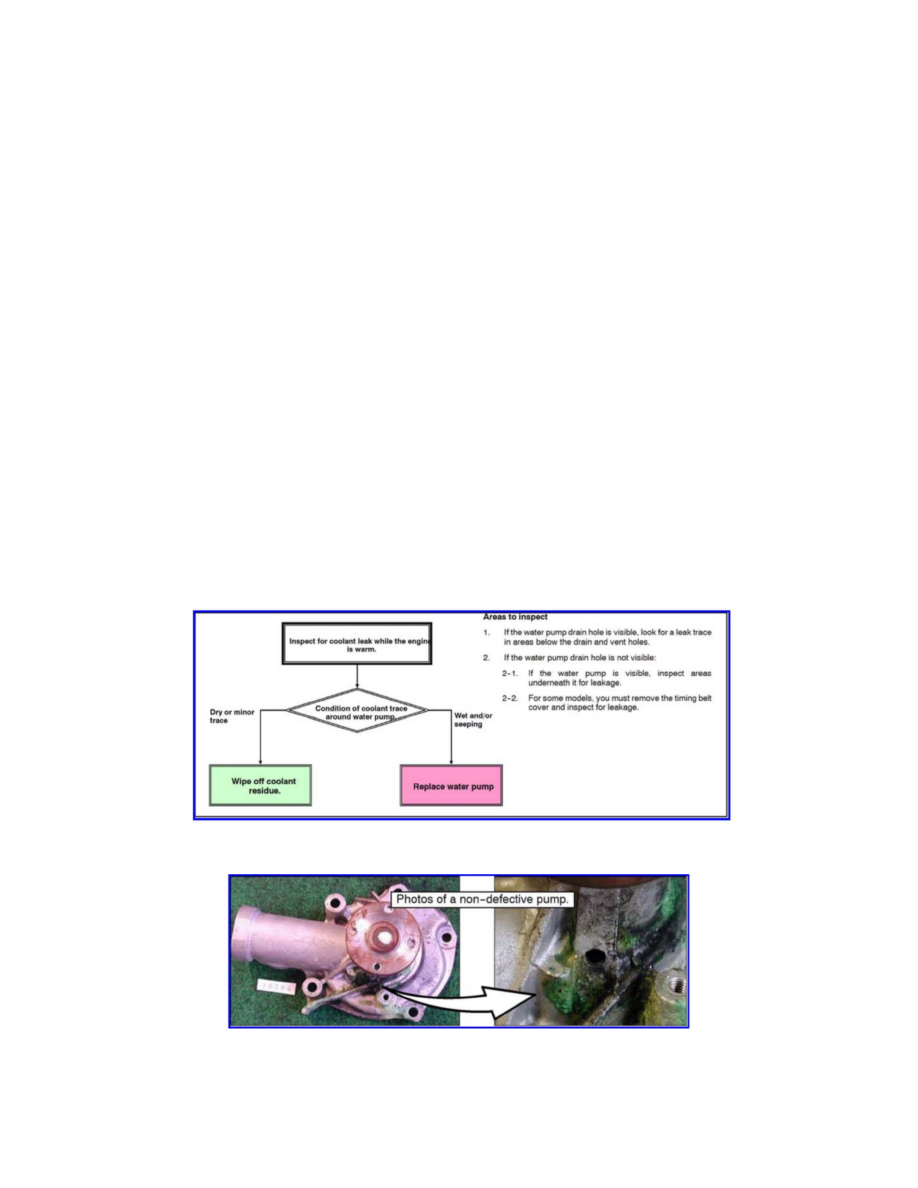Raider V6-3.7L SOHC (2006)

Water Pump: Technical Service Bulletins
Cooling System - Water Pump Leak Inspection
No: TSB-10-14-001
DATE: March, 2010
MODEL: All models
SUBJECT:
WATER PUMP LEAK INSPECTION CRITERIA
PURPOSE
This TSB provides inspection criteria for determining a leaking water pump. Following this procedure will prevent unnecessary replacement.
When examining a vehicle for coolant loss, a complete cooling system diagnosis is required. The presence of dried coolant residue is not an indication of
a defective water pump. Water pump clearances vary with engine temperature and new water pumps can leak coolant due to the presence of
manufacturing residue (e.g. casting sand), which is flushed from the pump over time. Because of these and other factors, some evidence of coolant
residue near the drain hole is normal.
AFFECTED VEHICLES
All models and years
PROCEDURE
NOTE:
On some models, the vehicle must be raised on a lift to view the underside of the water pump and its surrounding area.
Some models require the removal of the timing belt cover to inspect the water pump. Refer to the service manual for details.
INSPECTION
1. The engine should be at normal operating temperature.
2. Inspect the underside of the water pump and the surrounding area.
a. If there is no coolant residue, the water pump is not leaking and should not be replaced.
b. If dry coolant residue is seen, clean the area to prevent confusion during future inspections.
